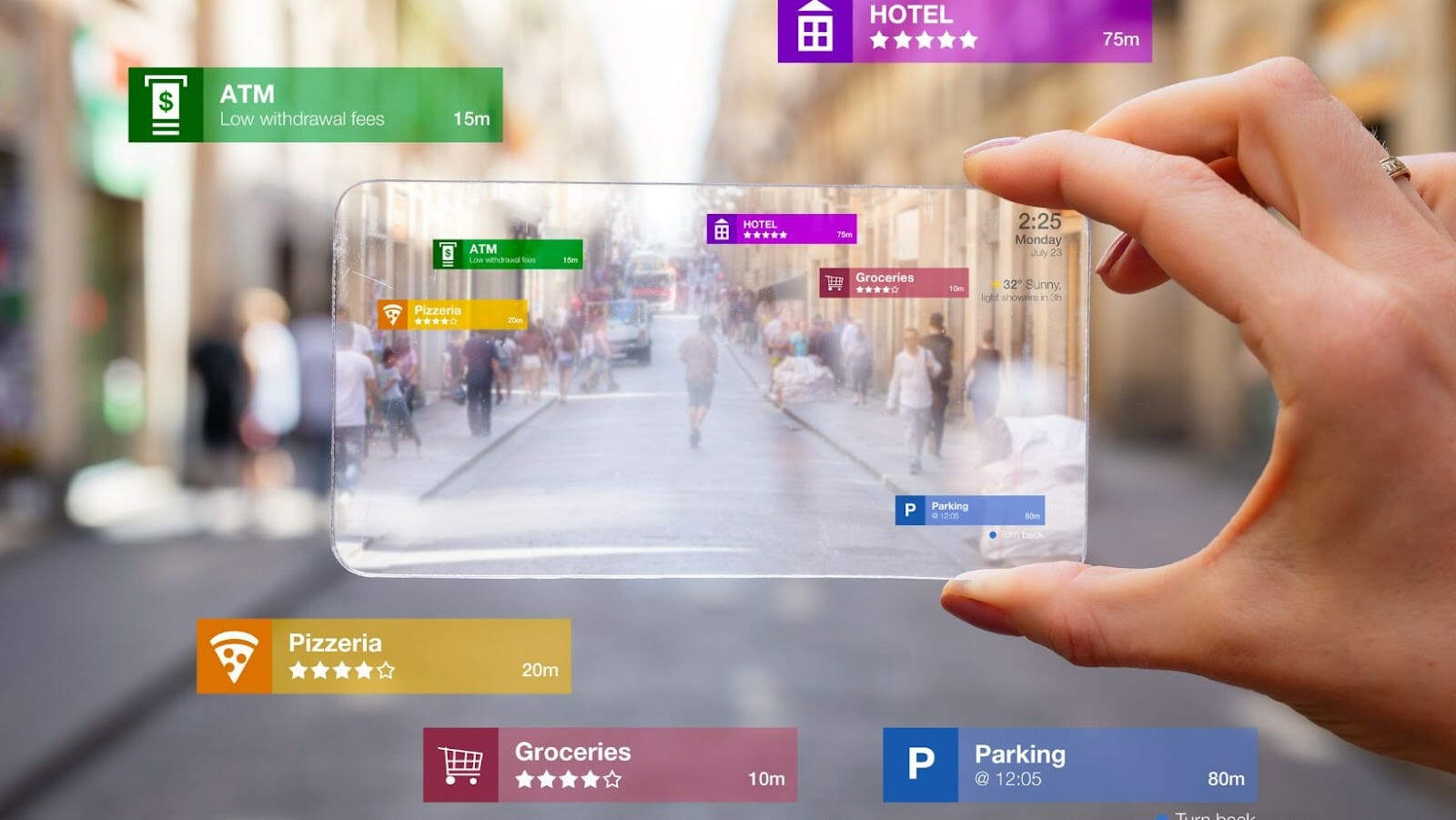Niantic, the tech company best known for creating the iconic augmented reality game, Pokemon GO, has launched the Niantic Real World Platform, a platform designed to enable the development of apps and experiences that bring the virtual world to life in the physical world.
This platform is the next step in Niantic’s mission to create an interconnected, global metaverse that breaks down the barriers between the virtual and physical worlds. In this article, we will explore how the Niantic Real World Platform will be used and what potential it holds for the future of augmented reality.
Niantic launches platform to build ‘real-world metaverse’ apps
Niantic Real World Platform is a suite of tools, services and programs that connects developers to ingenious, arcade-like experiences in the real world. The platform enables the creation of multiplayer, location-based and augmented reality (AR) games by leveraging technology from Niantic’s other real-world gaming efforts.
Niantic Real World Platform is powered by an ever-expanding set of tools for engaging people with innovative experiences that bridge the digital and physical worlds. It gives developers access to various resources including mobile SDKs, cloud infrastructure and corporate investments, designed to help create groundbreaking location data with low latency and increased accuracy needed for advanced gaming experiences.
Developers worldwide can use Niantic’s customizable software development kits (SDKs) to build compelling games that mix real-world locations, gaming mechanics and rich interactive elements to engage players in various settings. Also available are enterprise solutions that make it easy for businesses large or small to implement location innovations on their products or services.
The platform also enables shared experiences through community building elements like chat rooms, Activity Feeds and more – helping users connect more easily than ever before. With this combination of technology tools and human connection tools available at developers’ fingertips, game makers can set their imaginations free as they explore new ways to inspire their players with memorable physical world experiences.
What is the Niantic Real World Platform?
Niantic, the company behind popular games such as Pokemon Go and Harry Potter: Wizards Unite, has recently announced the launch of their Real World Platform. It is a comprehensive set of tools and services designed to enable developers to create immersive, location-based apps, experiences and games.
In this article, we’ll look at the Niantic Real World Platform and how it will be used.
How it works
The Niantic Real World Platform is a powerful set of technologies for creating augmented reality experiences. It allows developers to create immersive experiences that interact with our real world. The platform includes APIs, SDKs, gaming services and more to power augmented reality games, mobile apps and websites on a wide array of devices and operating systems.

Developers can use the Niantic Real World Platform to create engagement with the physical world. Some examples include:
- Augmented Reality (AR) Experiences – By embedding digital content into physical spaces, users can interact with virtual objects through their devices using AR technology – blurring the lines between virtual and physical environments.
- Geo Targeted Content – Content can be tailored for specific locations or regions by incorporating location-based content such as landmarks, street names and POIs (points of interest).
- Tracking & Progression Systems – Players progress through levels or goals while tracking progress via games and leaderboards. The platform tracks activity within non-gaming apps, such as step counts or recipes completed.
- Multiplatform Support – Developers can reach users across mobile platforms (iOS, Android), web browsers, service endpoints and more with integrated solutions across all media channels – enabling real-time experiences globally on multiple devices simultaneously.
Features and benefits
The Niantic Real World Platform is an all-in-one technology platform, which allows developers to build mobile games and experiences tied to the real world. Built from the same foundation of AR, computer vision and mapping that powers Niantic products such as Pokémon GO, Ingress Prime, Harry Potter: Wizards Unite, and more, the Niantic Real World Platform provides developers with instant access to a world of exciting new possibilities.
The Niantic Real World Platform offers unlimited opportunities for developers to create location-based experiences in the physical world. Using mapping data and local infrastructure to structure virtual worlds on top of the real world; developers can build interactive experiences like multiplayer gaming, augmented reality content sharing, geofencing and more. With features such as persistent sessions built directly into their platform’s API layer; immersive play sessions that remain consistent across multiple devices or grow into a large group experience are made possible.
Additionally; with features powered by advanced 3D facial recognition technology built directly into their API layer; developers will have access to features such as dynamic in-game masks & virtual items that can recognize a player’s expression & mood in real time. Using this feature in their applications & games they can dynamically adjust your avatars’ appearance according to various user emotions or expressions without specialised hardware capturing those expressions.
Developers will also have access to Local Weather Data powered by AccuWeather’s API – so localised events enabled by developer applications are further integrated with Global Weather Conditions such as temperature synchronisation across devices during specific play session etc; adding realistic elements like snow accumulation over time or foggy conditions near water etc should become easier than ever before!
By utilising The Niantic Real World Platform’s integrated features & capabilities – developers will be able to design cutting edge applications that bring together people from around the globe – all within a playground based off of the real world!
Use Cases
Niantic’s new Real World Platform (RWP) will enable developers to build applications and services that leverage the company’s augmented reality and geo-location technology. These apps and services could include virtual reality experiences, 3D asset creation, social networking, and location-based analytics. With the RWP, developers can quickly create immersive, location-aware applications powered by Niantic’s technology.
Let’s explore the potential use cases for the Niantic Real World Platform:
Augmented reality games
The Niantic Real World Platform offers limitless possibilities for advancing augmented reality (AR) technology and gaming. Through 3D overlays, virtual objects, and precise geospatial mapping, developers can create powerful new experiences in the real world. This has sparked a new wave of location-based AR games like Pokémon Go, Jurassic World Alive and The Walking Dead: Our World which have provided millions of globally-connected users with an entirely new gaming experience.
Thanks to the unique capabilities of the Niantic Real World Platform, these location-based AR games can combine digital elements with our physical environment in ways that are not limited by hardware or software constraints. By utilising crowdsourced data from its players worldwide and relying on advanced computer vision technologies, it is now possible to imagine entire new games that span across continents or one that makes its home geo-fencing a city or a country’s borders. Developers can utilise rich cityscape architectures for breathtakingly immersive user experiences without having to invest in complex infrastructure investments.
By providing an attractive platform for AR game development and enabling useful features such as localised eco-systems, social connectivity and global leaderboards, developers can quickly realise their creative visions while remaining compliant with industry standards. As augmented reality gaming crosses international boundaries and continues to challenge traditional methods of playability within a wide array of genres from action/adventure to role-playing games (RPGs), developers must know how to take advantage of all that Niantic Real World Platform has to offer to create truly remarkable experiences for their players.
Location-based services
Location-based services are some of the most popular use cases of Niantic’s Real World Platform. This type of technology allows networked mobile devices to be located and tracked in the physical world with the help of global positioning systems (GPS), accelerometers, and other sensors. By combining GPS, geolocation and mapping capabilities with real-time data, location-based services are being used to enable a wide variety of practical applications for both end users and business entities.

Location-based services allow businesses to conveniently acquire user location information to deliver personalised recommendations, help easily manage fleets, or provide enhanced navigation features that help people avoid traffic. For consumers, location-based services can provide tailored suggestions on food options, restaurant analysis or other recommendations based on their current location. Additionally for games like Pokémon Go running on Niantic’s platform, these services can ensure an immersive gaming experience by identifying game objects within a particular location that allow players to interact with them in exciting ways as simply walking towards them.
Social networking
The social networking use case of the Niantic Real World Platform takes advantage of the technology’s ability to combine virtual reality with the real world. This allows users to stay connected with one another in a more meaningful and engaging way than traditional digital platforms.
The platform allows users to interact and explore a custom-created virtual environment based on their physical location such as parks, restaurants, and museums. Users can connect with others around them, make new connections, join established groups, and start conversations in different locations through virtual interaction rather than face-to-face communication.
The platform also supports real-time media sharing such as images, videos, audio clips and messages. In addition, it facilitates synchronised user activities like augmented reality scavenger hunts or close range multiplayer games, enhancing collaboration between people within a specific range.
Moreover, users can customise their avatar profiles to represent themselves in the virtual world, allowing them to express themselves creatively within an engaging yet safe environment. To ensure an enjoyable user experience for everyone involved on the network, moderators can monitor content flows or launch campaigns against specific behaviours like bullying or inappropriate language use that hinder proper interactions among its users.
Challenges
Niantic’s announcement of their Real World Platform brings a lot of new opportunities with it. However, there are some challenges that developers have to take into consideration when building apps with the platform. This section will cover the various challenges and issues that come with building apps with the Niantic platform:
Privacy concerns
The Niantic Real World Platform presents powerful opportunities for game developers and the industry. However, it also presents a unique set of challenges due to associated privacy concerns.
The platform aggregates, collects, and stores personal data from its users, including their location, devices used, and personal preferences. As such, the platform must take measures to ensure that users’ data remains secure while ensuring they can have a safe and enjoyable experience. To achieve this goal, Niantic has implemented certain standards related to privacy and security that developers using their platform must adhere to:
- Data security: All data sent through the Real World Platform must be securely transmitted, with appropriate encryption. Data must be stored in such a way that unauthorised access is not possible.
- User consent: Developers are encouraged to obtain explicit user consent before accessing sensitive information or sharing it with third parties.
- Transparency & disclosure: Developers should make available all relevant policies related to user data collection & management as defined by privacy regulations.

Additionally, all developers are required to participate in regular security audits. This ensures that applications built on the Niantic Real World Platform remain secure and compliant with applicable laws and regulations about user privacy.
Security issues
Security issues remain a major challenge for the widespread adoption of the Niantic Real World Platform. At its core, the platform offers a shared virtual game world that straddles the line between real and digital landscapes. However, data protection and privacy become major concerns as billions of people interact in this space. Further compounding this, developers must ensure that their applications comply with all applicable international laws and regulations.
To address these security challenges, developers implementing applications with Niantic’s Real World Platform must ensure that they adhere to industry best practices regarding authentication protocols and data protection. This includes:
- Implementing strong log-in credentials for all user accounts on their application.
- Encrypting any other sensitive information stored on their platform – such as passwords or financial data – so that it is not easily accessible by outside third parties.
- Paying particular attention to any regulations or statutes imposed by the jurisdiction in which their application will be used.
By taking these proactive steps, teams working with Niantic can ensure that they are taking appropriate measures to protect users’ private information while providing seamless experiences within this ground-breaking virtual world.
Performance optimization
To ensure applications built on the Niantic Real World Platform can provide a smooth and engaging experience for players, developers need to identify and mitigate potential sources of latency. Below are some important factors to consider when optimising game performance:
- Data optimization: manage data efficiently to reduce network communication and minimise latency as much as possible. This involves ensuring only necessary data is sent over the network, compressing data where appropriate, and leveraging cloud resources to support larger datasets.
- Network optimization: optimising bandwidth utilisation, managing packet loss mitigation strategies such as retransmission or forward error correction (FEC) coding, utilising content delivery networks (CDNs), caching static assets locally with an edge server, and optimising the deployment of dedicated servers.
- Compute optimization: using advanced streaming technologies such as multicast protocols to reduce overhead costs associated with serving large numbers of concurrent users from a single game instance; leveraging multi-zone deployments within cloud providers for geographic locality; load balancing cloud resources more efficiently; and performing hardware upgrades where appropriate for better compute performance.
By carefully tailoring your codebase to meet specific latency goals and taking proactive measures to optimise network communication, you can enable players worldwide to enjoy a great gameplay experience powered by the Niantic Real World Platform.
tags = real-world metaverse apps, major update to Lightship for next year, niantic wall arpeters theverge, niantic nintendo niantic theverge, niantic ar ios android 20m theverge, niantic visual system theverge, niantic nintendo ar theverge, niantic lightship ar android 20m theverge, nintendo niantic nintendo theverge, nintendo niantic ar theverge, niantic niantic nintendo theverge